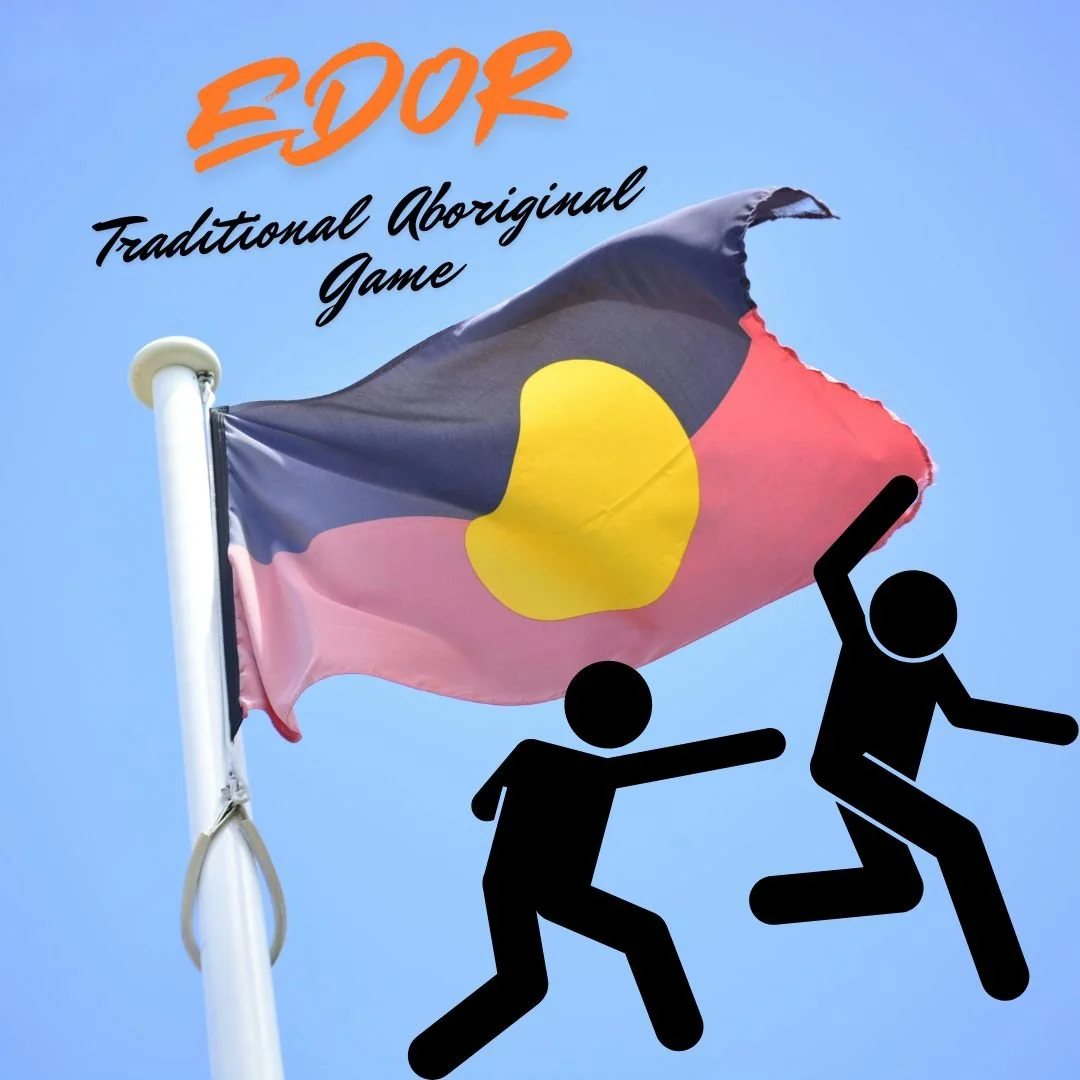Edor
Edor
While looking up traditional games from Australia, I stumbled upon this fantastic online resource called Yulunga Traditional Indigenous Games from the Australian Sports Commission. It provides an online card set that features games played by Australian Aborigines from all over the continent. Unfortunately, I was supposed to study all of Oceania with my students this past few months. Still, there were so many awesome games I couldn't help myself, and we spent the whole time studying Australia. Next time I will ensure to get in plenty of Indigenous sports from New Zealand, Tonga, Fiji, Samoa, Papa New Guinea, and the many Polynesian Islands in the area.
One of the things that Aborigines prided themselves in was their ability to tell stories. In fact, all of their art was just considered a medium for storytelling. They were masters at using stories to become walking encyclopedias and atlases, memorizing the terrain of Australia and knowing so much about the flora and fauna of their territories. I wanted to honor this tradition by choosing games that I could clearly make a story and connection to a hunting and gathering skill. I wanted the students to imagine themselves doing the activity the game represented while they played it. Australian Aborigines had an inherent understanding that we learn the best when having fun and playing. I don't think it is by chance that so many of their games practiced necessary skills for hunting and gathering. I think the Aborigines knew that teaching through games efficiently got children to practice and perfect their skills.
Edor is like a reverse Capture the Flag game. One team starts with the "flag," and they try to invade the other team to get to their back line. If the player with the flag is tagged while doing so, they give up the flag to the student who tagged them and sit down. The former tagger, now the flag holder, tries to invade the other team. As the game progresses, there will be fewer and fewer players to tag the invader. The invader can hand off the ball to someone else before running; they often try to make it secretive. This replicates the attention it takes to immediately shift focus on a moving object like an animal running from a bush. This game is akin to another sport called rugby. It may be one of the reasons rugby is so prevalent in Australia. There must have been a lot of cultural diffusions when Aborigines and English settlers witnessed each other's games and noticed the similarities.
These games, invented thousands of years ago by their ancestors, are essential to Indigenous peoples because it reconnects them with their culture. By playing these traditional Aboriginal games, you will help your students expand their knowledge of Aboriginal culture. They will also get a healthy dose of empathy as they realize these games are vital for teaching skills required to live in some of the harshest climates on Earth. Many of these Aboriginal games are similar to many sports worldwide. This helps us realize that even though people can live thousands of miles apart, we are more similar than we are different.
Materials:
· A large play space
· Something to act as a flag (like a tennis ball)
· Something to demonstrate the end lines and the halfway point
o Cones or rubber disc dots work well outside, and the lines of the gym are perfect for indoor play.
Minimum Amount of Students Needed: For this game to work correctly, I suggest no less than eight players making two teams of four. This game is perfect for large classes with many students.
Age: All Ages

